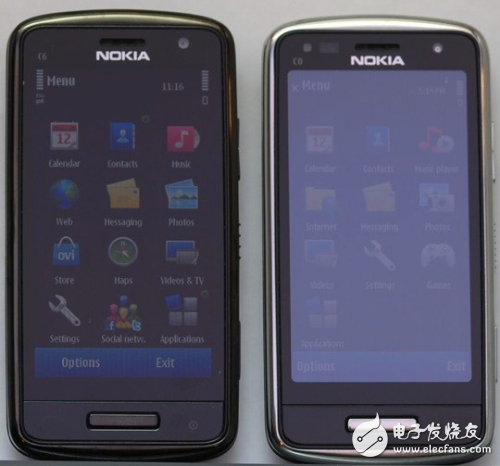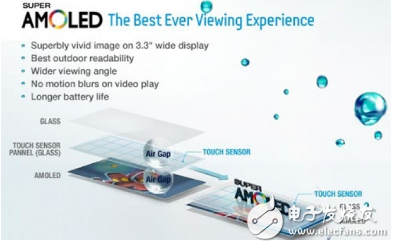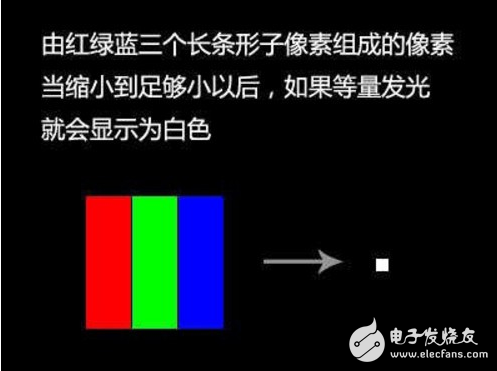"Our screen is 30% wider than the gamut of friends." In general, if you see this in the new mobile phone conference, it means that this new product uses an OLED screen.
Now, OLED has repeatedly reported on the news, in addition to the use of such screens because more and more domestic mobile phones, but also because Taiwanese analyst Guo Mingxi, who often predicts Apple's new products, said that the iPhone 8 will use OLED screens. This broke the news no doubt in the mobile phone industry this pool stirred up no small waves.
There are many benefits of OLED screens.
OLED, or organic light-emitting diode (English: Organic Light-EmitTIng Diode, abbreviation: OLED), also known as Organic Electroluminescence Display (English: Organic Electroluminescence Display, abbreviation: OELD), organic light-emitting semiconductor.
OLED is divided into AMOLED and PMOLED. Since AMOLED is mainly used on smartphones, OLEDs default to AMOLEDs unless otherwise specified.
AMOLED has self-illuminating properties, so this screen does not require a backlight, which makes the screen thinner and more power efficient. From the data given by the terminal manufacturer, the thickness of the LCD screen is 0.6~0.8mm, and the thickness of the AMOLED can be 0.3mm. This is very tempting for the pursuit of the ultimate thin and light smartphone industry. Moreover, the AMOLED screen also features a wider color gamut, near-infinite contrast, and faster response speed.
Not to mention the OLED's unique lighting principle, whether it is a mass-produced hyperbolic screen phone or a flexible phone with a sci-fi concept, AMOLED technology plays a very important role in it. And because of the low latency, AMOLED is also very good for future mobile phones and VR.
As a result, many industry insiders have indicated that OLED is the future display technology.
OLED is not so good at the beginning
Although OLED has many advantages at present, like all new technologies, it has many defects at the beginning, such as low brightness, severe color shift, and stronger graininess than LCD screens at the same resolution.
OLEDs began to develop in the 1980s and were commercialized in the 1990s. The OLED screen is really starting to be applied on mobile phones for nearly a decade. In early 2006, BenQ-Siemen released the world's first mobile phone with an "AMOLED" screen, the S88, which opened the curtain for the application of OLED screens in mobile phones.
In the era of touch, the importance of the screen has become more and more prominent, and AMOLED has been used more and more in the industry. The large-scale application of OLED screens in mobile phones is inseparable from the former giant Nokia and the industry's main AMOLED screen provider Samsung, which have contributed a lot to the gradual improvement of OLED screens, especially Samsung.
As mentioned earlier, one of the major drawbacks of the initial AMOLED screen was its low brightness, which made the phone's visibility in the sun not good and the experience was poor. In response to this problem, Nokia introduced ClearBlack Display (CBD) technology, the Chinese name is "Yue screen" technology. This technology reduces screen reflections and improves view quality, especially in outdoor environments.
As the name suggests, ClearBlack Display strives to ensure that the blacks that consumers see are truly black, so they also increase the contrast of the display, making the entire picture look easier, similar to the effect of a pair of polarized glasses. The visibility of the AMOLED screen with CBD technology has been greatly improved.

The official Nokia blog has specifically explained the principles of this technology:
The light illuminates the polarizer, which polarizes the light vertically, which is simply to align the light wave vibration in a particular direction.
Light is irradiated on the circular polarization retardation layer: the retardation layer again transforms the vibration direction of the light to achieve light polarization
Light hits the screen layer and produces a bounce
Light enters the retardation layer and the light is horizontally reflected after penetrating the retardation layer
Eventually, the light illuminates above the linear polarizer, and since the light is already horizontally directed, it is completely blocked by the linear polarizer.

The left is the C6-01 with the CBD; the right is the prototype without the CBD.
CBD technology was first launched on the first Symbian^3 model C6-01, and later became a must-have technology for Nokia's flagship (both AMOLED and LCD screens). The Nokia 808 Pureview, which uses this technology, has firmly dominated the visibility of the sun for a long time. In order to distinguish it from other screen AMOLEDs, Nokia refers to this kind of screen using CBD technology as “ClearBlack AMOLEDâ€, referred to as “CBA†screen.
Also in order to make AMOLED display more transparent and enhance visibility in the sun, Samsung's approach is to introduce Super AMOLED screen.

The traditional AMOLED screen is constructed with three layers, an AMOLED display screen, a touch-sensitive panel and a screen saver glass. Super AMOLED eliminates the middle layer of touch-sensitive panel and integrates the touch-sensitive layer into the AMOLED display layer. Therefore, Super AMOLED is thinner than AMOLED screen, and because it is a native touch layer, unlike AMOLED, which also needs a touch sensor and an air layer, the touch is also more sensitive, and the color is brighter and the brightness is higher.
Samsung launched the Super AMOLED screen on the first flagship S8500 of its own BADA system. Of course, more consumers know that the Super AMOLED name is because of the Samsung Galaxy S, and this model may also be regarded as the beginning of Samsung Android. Super AMOLED is no longer absent from the subsequent Samsung flagship. However, it is worth mentioning that Super AMOLED is a registered trademark of Samsung. In theory, except for Samsung, other brands cannot use Super AMOLED.
Before and after the release of Galaxy S, many hot-selling models in the industry used AMOLED screens, such as HTC Desire. Later, due to the capacity of AMOLED, Samsung stopped supplying AMOC panels to HTC, and HTC Desire switched to Sony's SLCD. This incident has also been referred to by some media as “changing the doorâ€, and the HTC and Samsung’s beams in the field of smart phones have also been formed. Of course, these are all off topic.
In the Desire comparison of the two screens, it was found that although both are 3.7-inch 800*480 screens, the AMOLED screen version of the Dersire is more vivid but grainy than the Desire of the SLCD screen version.
The reason for this is that the PenTIle arrangement of the screen sub-pixels cannot be ignored.

Most LCD screens use RGB sub-pixel arrangement. This sub-pixel arrangement divides a square-shaped pixel into three equal parts, each of which is given a different color, so that a color pixel can be formed (generally, the order of three pixels is arbitrary, but generally It is "red, green and blue" or "blue, green and red".
Wire harness and the surrounding parts shall be even and sufficient distance shall be kept from the heat source,
Considering the protection against electromagnetic interferencee,
Consider assembly technology, maintenance technology,
Grounding wire layout,
Heat dissipation of wire harness and fuse box
Car Seat Harness,Power Seat Wiring Harness,Power Seat Harness,Right Seat Wire Harness
Dongguan YAC Electric Co,. LTD. , http://www.yacentercn.com